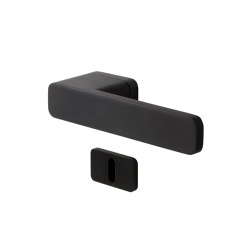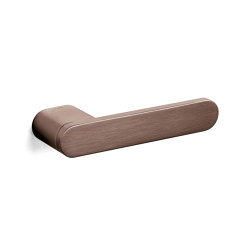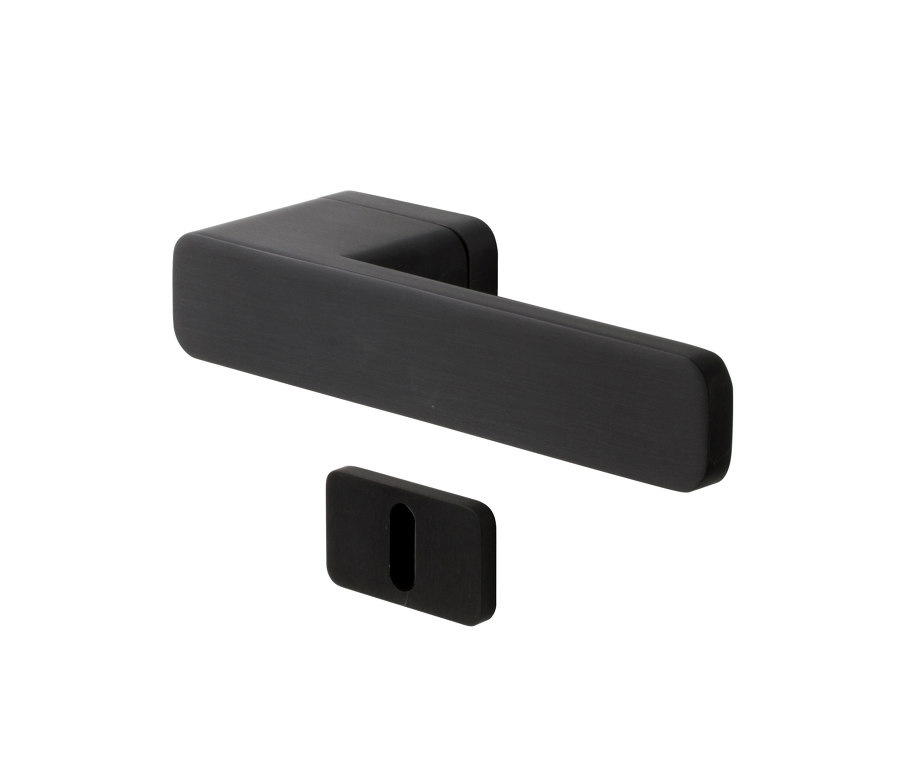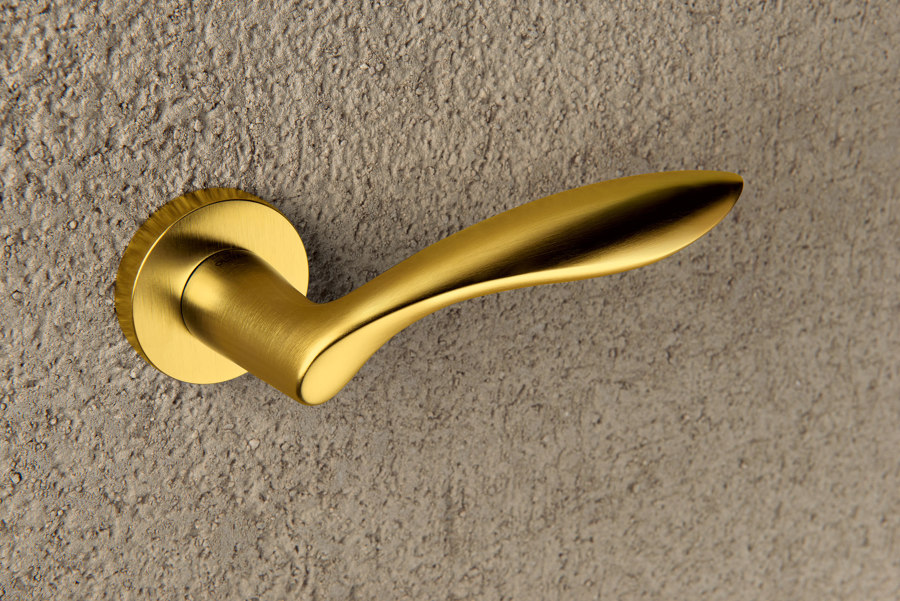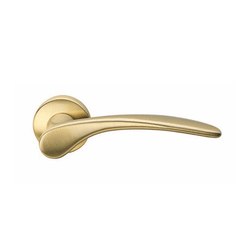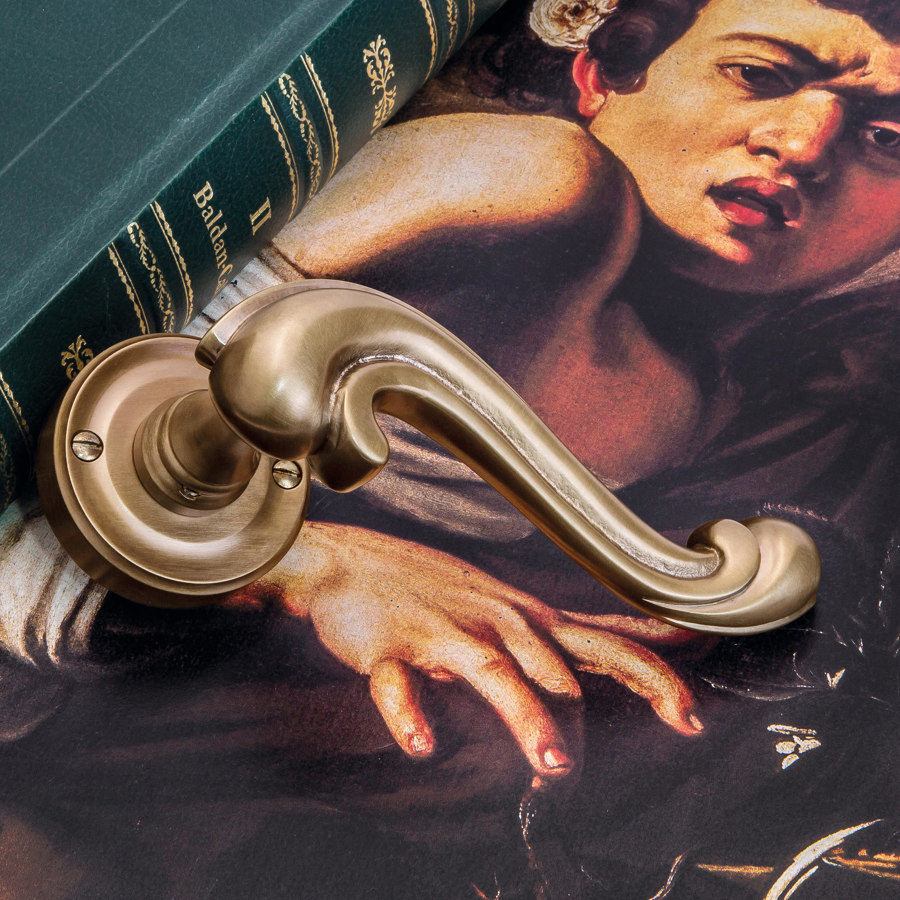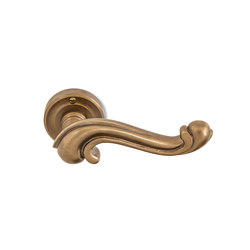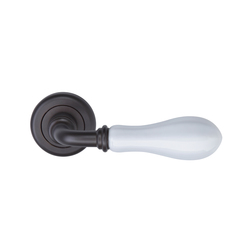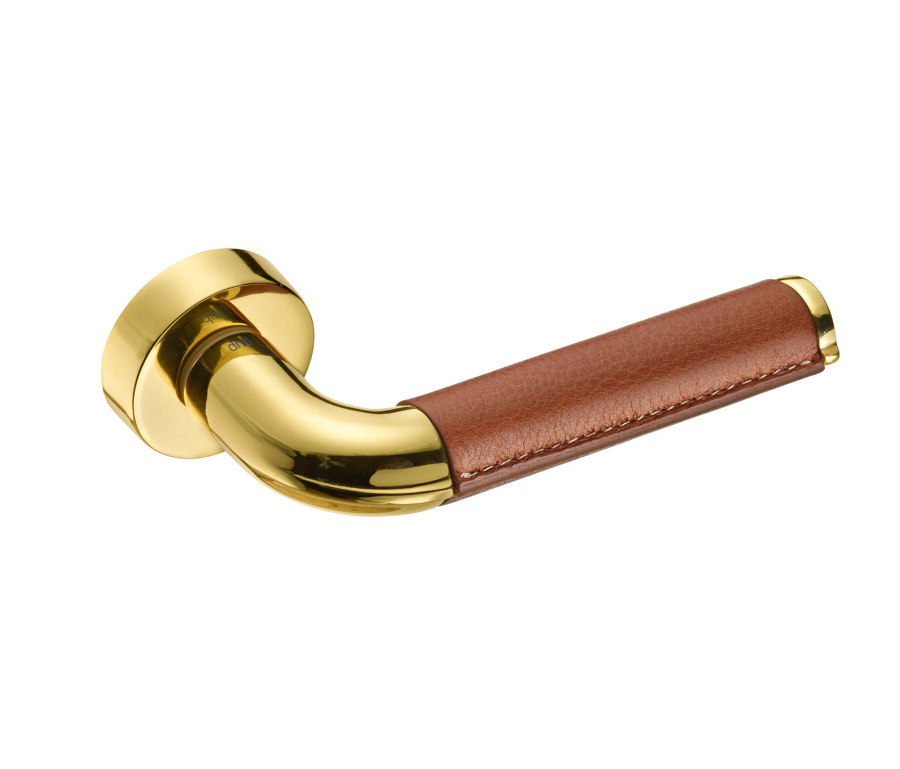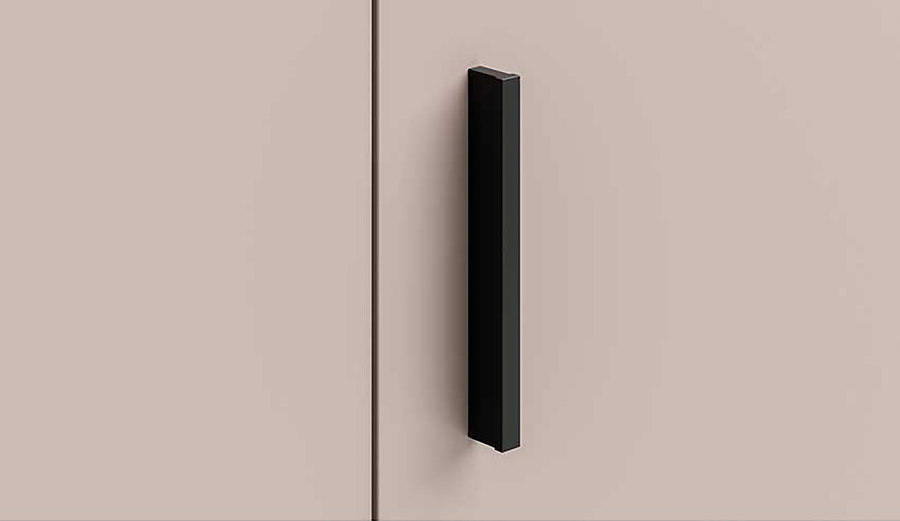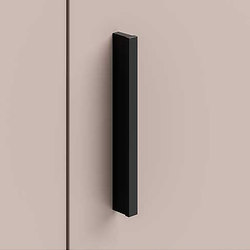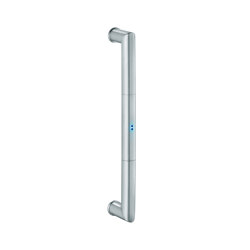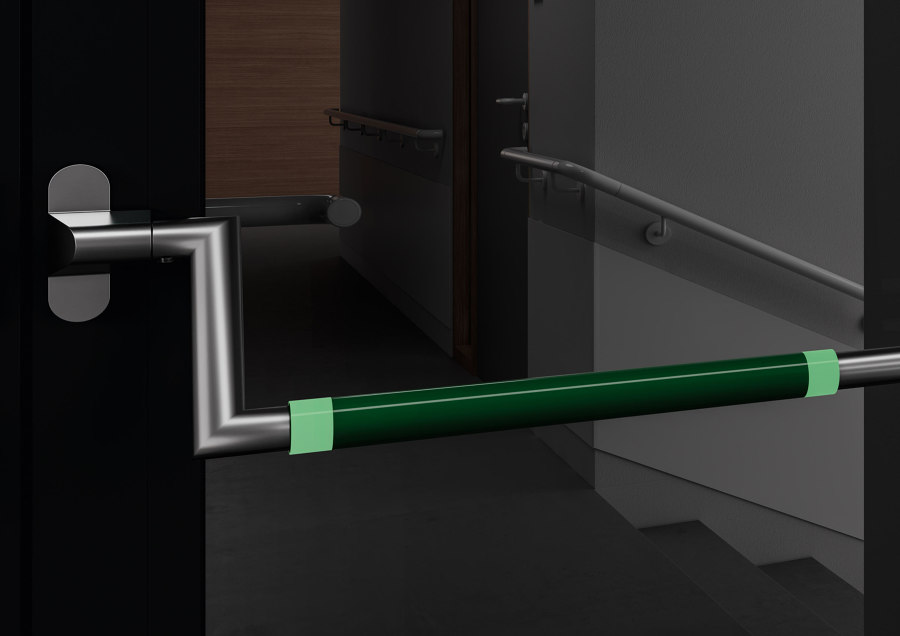Can you handle this? Ten types of designer door handle
Texto por James Wormald
22.02.23
Essential not only for access, safety and security, door handles also play a crucial role in an interior’s aesthetic style and ergonomic comfort.
Jatec’s aluminium One Minimal lever handle features an in-line baseplate and is finished in a choice of satin black or matt white
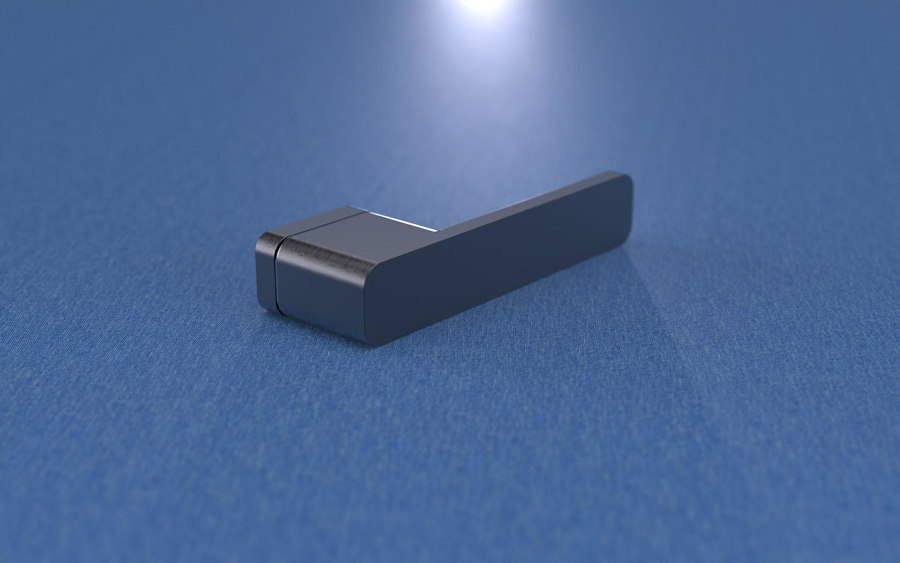
Jatec’s aluminium One Minimal lever handle features an in-line baseplate and is finished in a choice of satin black or matt white
×The functional importance of the door handle is unquestionable. A closed door improves fire safety, obstructs unwanted noise and smells and is part of an efficiently heated home – ‘Shut that door!’ is a well-known winter catchphrase, and using door handles keeps fragile fingers safe from doors and fragile doors safe from grubby fingers. Both aesthetically and ergonomically, however, the stand-out form of a hardwearing door handle bookends our interior experiences, providing literal touch points in near-constant use. Here are some of the different types and styles for consideration.
The minimalist straight-line form of the Radial lever handle from Olivari uses no baseplate and is available in satin bronze (pictured), copper, anthracite, steel or chrome
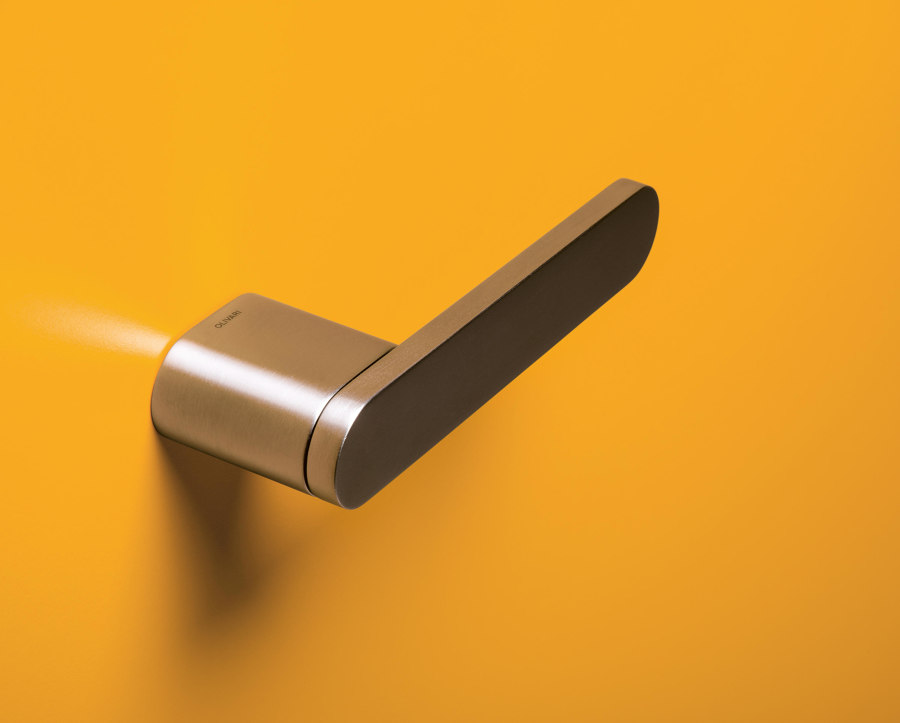
The minimalist straight-line form of the Radial lever handle from Olivari uses no baseplate and is available in satin bronze (pictured), copper, anthracite, steel or chrome
×Lever handles: straight and clean
Combining ease of use with plenty of design, material and colour options, lever handles naturally include movement in their form. For minimalism-seeking interiors, however, the door handle’s presence can be an outlier. Although they might not quite fit as comfortably in the hand, straight-line door handles like Radial from Olivari ensure the form slots into the surrounding minimalist interior instead.
Jatec’s One Minimal lever handle (top) includes a matching key entry rosette while M&T Manufacture’s Pull Handle YES! (Bottom) puts handle and lock together in one form
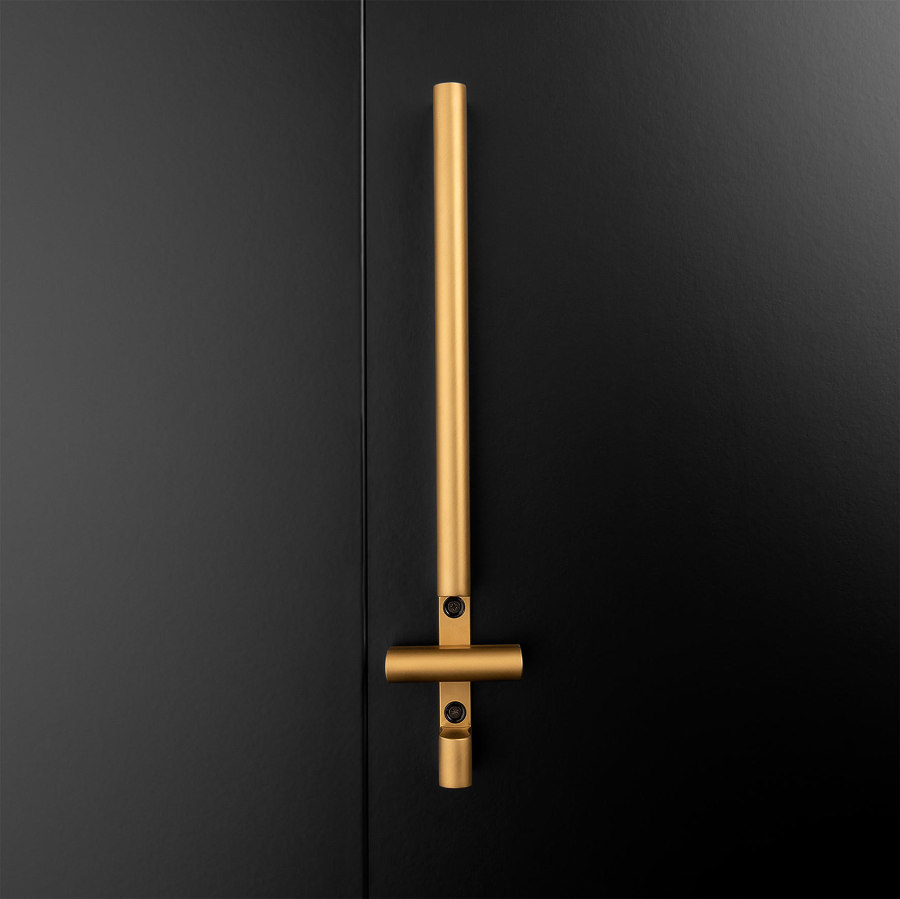
Jatec’s One Minimal lever handle (top) includes a matching key entry rosette while M&T Manufacture’s Pull Handle YES! (Bottom) puts handle and lock together in one form
×Door handle baseplates: backplate or rosette
Along with the handles they hold, baseplates come in all shapes and sizes. The key to baseplate choice is, ironically, the lock. If a door lock is required, then a separate matching rose can be added to keep the two elements connected but apart. Like the One Minimal door set from Jatec, which adds a lock rose to its no-baseplate handle. The longer Pull Handle YES! from M&T Manufacture, meanwhile, keeps both the handle and a thumbturn lock in one fluid form.
Both the Onda lever door handle from Olivari (top) and those in the Valli&Valli range (bottom) are curved to fit comfortably into the hand

Both the Onda lever door handle from Olivari (top) and those in the Valli&Valli range (bottom) are curved to fit comfortably into the hand
×Door handles moulded for comfort
While the straight edges of a minimalist lever handle fit into the sleek edges of a minimalist interior, they’re not quite so easy on the sensitive muscles in the hand. Slightly curved handles such as Onda from Olivari or from Valli&Valli’s range are sculpted to provide the perfect compromise, matching the curvature of the hand without being too ostentatious.
The Baroque-era Barocco lever handle from Colombo Design (top) and the porcelain-handled Dev door handle from Groël (bottom) take inspiration from the past, and yet equally suit contemporary interiors

The Baroque-era Barocco lever handle from Colombo Design (top) and the porcelain-handled Dev door handle from Groël (bottom) take inspiration from the past, and yet equally suit contemporary interiors
×Traditionally elegant door handles
If it’s ostentation that’s desired, however, then it’s ostentation you may have! Door handles may have been around for as long as doors, but before the industrial revolution, they were reserved for the rich. Door handles with antique styles such as the baroque-styled Barocco handle from Colombo design, or the more contemporary Victorian material contrast of porcelain, seen in the Dev Door handle from Groël, have opulent looks, yet still complement more modern interiors.
DND Maniglie wrap the Havana lever handle in hand-stitched leather (top) and Karcher Design’s Torino (bottom) offers various contrasting material inlays

DND Maniglie wrap the Havana lever handle in hand-stitched leather (top) and Karcher Design’s Torino (bottom) offers various contrasting material inlays
×Get a grip: multi-material door handles
A well-hung door shouldn’t need a particularly strong grip to open, but door handles with more textured surface materials ask less work of the hand and wrist, ensuring more comfortable long-term operation. This Havana handle from DND Maniglie, for example, wraps a stitched leather case around the handle for a softer feel. For other contrasting materials, Karcher Design offers Torino door handles with a choice of leather, laminate, wood or carbon inlays.
The EK530 Door knob from Karcher Design blends a smooth, simple geometric form with a cool finish of antique bronze

The EK530 Door knob from Karcher Design blends a smooth, simple geometric form with a cool finish of antique bronze
×Door knob: an ambidextrous alternative
Lever handles point away from the door opening, so we naturally use different hands to open and close them. Doorknobs, however, can be held by the same hand on both sides. Useful if only one hand is available. Turning the latch on a doorknob, however, puts more strain on the wrist, rather than the forearm. If a doorknob is preferred, the EK530 knob from Karcher Design combines sleek design with comfort in the hand, and enough grip to enjoy the turn.
Instead of a latch, the Konzerva magnetised system can be adjusted after it is installed, meaning the handle’s operational resistance is always suited to its user’s preference

Instead of a latch, the Konzerva magnetised system can be adjusted after it is installed, meaning the handle’s operational resistance is always suited to its user’s preference
×Tension lottery: how hard is it to open a door?
Whether you choose a doorknob or door handle to open a latch, different systems have different levels of resistance. Too little, and opening the door feels like a weak handshake. But too much can cause mid- or even long-term pain. Instead of a latch, the Konzeva pull handle from M&T Manufacture uses a magnetic system where proximity, and therefore the strength of the magnet, can be adjusted post-install.
The Apm16 Handle from Former (top) is clean and sleek, but unsuited to heavier doors. Whereas Forms+Surfaces’ Tubular push/pull handle (bottom) is thick enough to be pulled with force
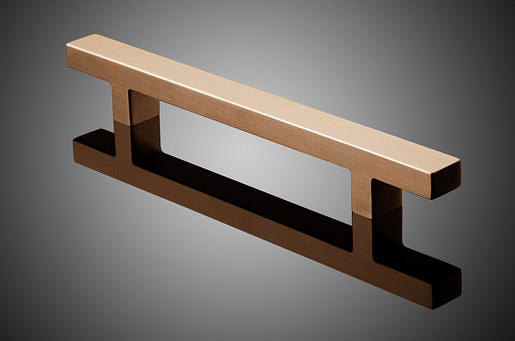
The Apm16 Handle from Former (top) is clean and sleek, but unsuited to heavier doors. Whereas Forms+Surfaces’ Tubular push/pull handle (bottom) is thick enough to be pulled with force
×Push and pull door handles: save the wrist!
Doors with push/pull handles don’t rely on latches to stay closed, so clean-look slim-profile pull door handles like the Apm16 Handle from Former can be used. Heavier doors, however, such as those with door closers, need a handle that hands can wrap around, so users can pull with their bodies. Forms+Surfaces’ Tubular Door Pull, for example, has enough space behind for a large hand, yet its clean lines still look good.
FSB can integrate a fingerprint scanner in door pull handles, for high-end security you don’t need a key for
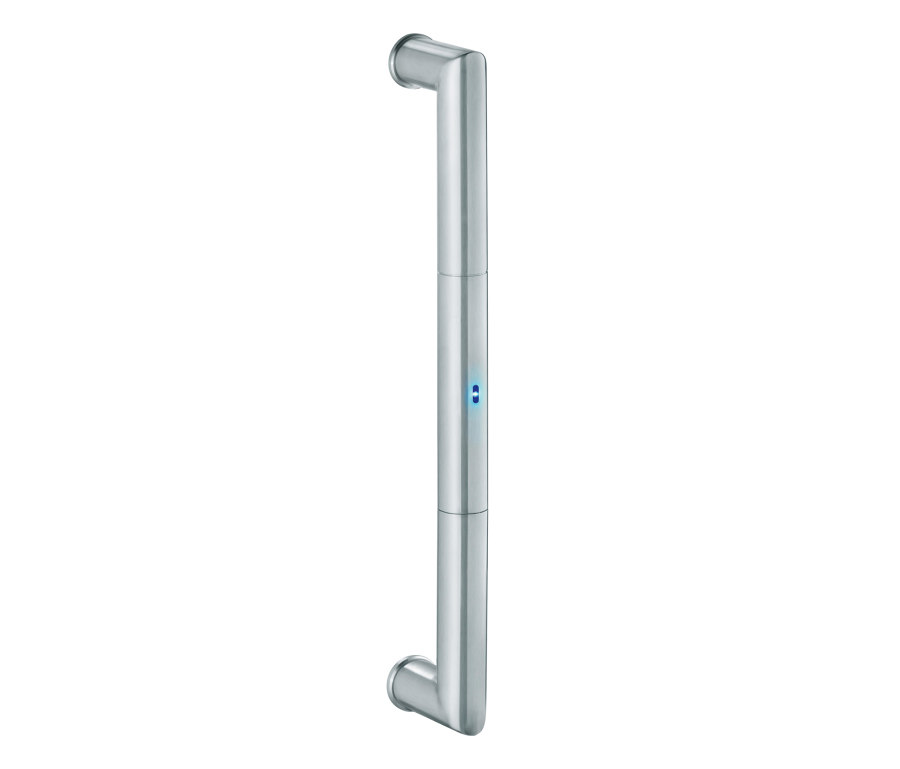
FSB can integrate a fingerprint scanner in door pull handles, for high-end security you don’t need a key for
×Personal entry: fingerprint security
For more exclusive entrances, fingerprint-operated door handles like FSB’s door pull with a fingerscan take on the role of handle, lock and bouncer all in one. The handle manages to integrate the fingerprint scanning technology into a standard-looking pull handle, so it’s unclear even how to get in, unless you’re allowed.
HEWI’s Panic bar is an emergency exit push bar that glows in dark, dangerous environments
Emergency door handle with high visibility
Along with the wrong people, doors are designed to stop the wrong environment – like a fast-moving fire – too. In a fire, however, doors are an essential means of escape. Emergency exit push bars like the Panic bar from HEWI are quick and easy alternatives to handles, and can feature luminescent bands to appear clearly, even in a dark, smoke-filled room.
Added to these current door handle options, emerging innovations like touchless entry, smart door locks and self-sanitising handles are making sure the future of door handles is secure.
© Architonic
Head to the Architonic Magazine for more insights on the latest products, trends and practices in architecture and design.

